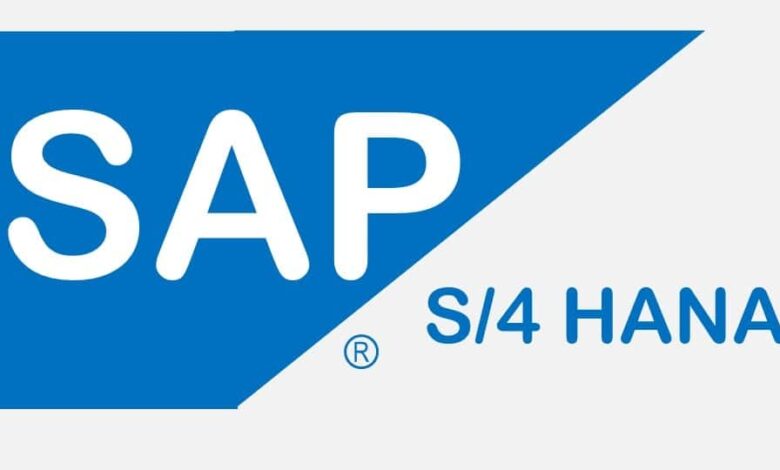SAP ECC vs. SAP S/4HANA: What’s the Difference & Which Is Right for Your Business?

With organizations working to maximize operational efficiency and usher in the digital transformation age, having the appropriate Enterprise Resource Planning (ERP) system is crucial. Two of the most sought-after ERP solutions are SAP ECC (ERP Central Component) and SAP S/4HANA, both of which aim to simplify business processes. But with SAP’s recent declaration to discontinue mainstream maintenance of ECC by 2027, companies are increasingly looking at SAP’s newest product: S/4HANA.
But what are the main differences between these two systems, and how do you know which one is best for your company? In this guide, we will discuss the differences, advantages, migration plans, and factors that come into play when moving from SAP ECC to S/4HANA.
1. What Is SAP ECC? Overview of the Legacy ERP System
SAP ECC (Enterprise Central Component) has been an effective, full-fledged ERP system for enterprises globally. For numerous companies, ECC has acted as the driving force behind operations, providing modules that streamline business functions such as finance, human resources, logistics, and supply chain management. SAP ECC has been the solution of choice for companies wishing to automate tasks, enhance data accuracy, and deliver operational efficiency.
Nonetheless, with SAP’s notification that they will end mainstream support for ECC by 2027, companies need to begin making contingency plans. Although ECC itself is a sound and secure system, it is rapidly becoming outdated compared to current-day technologies.
The requirement for greater real-time data processing, streamlined architectures, and more intuitive user interfaces has spurred SAP to create its next-generation ERP offering—SAP S/4HANA.
2. What Is SAP S/4HANA? Key Features and Capabilities
SAP S/4HANA is a radical overhaul of SAP’s ERP product. Designed ground up on SAP HANA—a platform for in-memory computing—S/4HANA delivers unparalleled real-time processing of data and a lean data architecture, setting the stage for the future of enterprise resource planning.
Some of the key features of SAP S/4HANA are:
- Real-Time Data Processing: With SAP HANA’s in-memory technology, data can be processed and analysed in real-time, enabling quicker decision-making and enhanced business agility.
- Simplified Architecture: In contrast to its predecessor, which was based on complicated systems and multiple databases, S/4HANA combines data into fewer tables, simplifying processes and eliminating redundancy.
- User Experience (UX): The launch of SAP Fiori, a responsive and intuitive user interface, improves the user experience by providing role-based access and easy navigation.
- Cloud-Ready: SAP S/4HANA is built to run smoothly in both on-premises and cloud environments, giving businesses the flexibility of deployment options that support their digital transformation strategy.
3. Core Technical Differences Between SAP ECC and S/4HANA
When SAP ECC is compared with S/4HANA, the technical divergence is deep. Let us look at some of the main differences that need to be taken into consideration by organizations:
Database
- SAP ECC: ECC can run on various database platforms such as Oracle, IBM DB2, and Microsoft SQL Server. Though these databases have served businesses well, they are not geared towards the type of real-time data processing modern enterprises demand.
- SAP S/4HANA: S/4HANA is entirely based on the SAP HANA in-memory database, which supports high-speed analytics and data processing. This makes it possible for companies to work with vast amounts of data faster and to attain real-time knowledge about their processes.
Data Model
- SAP ECC: ECC is based on a historical, complicated data model with redundant tables and aggregate data. This structure necessitates constant maintenance and data reconciliation, which can be laborious and expensive.
- SAP S/4HANA: S/4HANA offers a flattened data model, and redundant tables are removed. It utilizes fewer database tables for operations, resulting in better performance, simpler data maintenance, and lower storage demands.
Universal Journal
- SAP ECC: In ECC, controlling and financial data are kept in distinct tables, which can create inconsistencies and involve cumbersome reconciliation steps.
- SAP S/4HANA: The Universal Journal keeps financial and controlling data in one table (ACDOCA), enabling higher transparency, accuracy, and effectiveness of financial reporting.
4. SAP Fiori vs. SAP GUI: User Experience Comparison
User experience is instrumental in making ERP systems functional for the operational needs of daily business. Here, SAP Fiori and SAP GUI differ fundamentally.
SAP GUI (Graphical User Interface) – Applied in ECC
SAP GUI is the classic interface found in SAP ECC. It features a technical, transactional structure that is cumbersome to use, particularly for newcomers. The interface is meant for users who understand complicated ERP systems and require visibility into a variety of data and reports. Though SAP GUI is usable, it is not very user-friendly and lacks flexibility as expected by modern users.
SAP Fiori – Applied in S/4HANA
SAP Fiori, launched with SAP S/4HANA, is a new, role-based, responsive user interface intended to enhance usability. SAP Fiori provides a streamlined, intuitive design that is easily customizable by user role within the business, allowing employees to more easily find their way around the system and the tools needed. By creating a more user-focused experience, SAP Fiori facilitates enhanced productivity, less training time, and greater satisfaction overall.
5. Simplified Data Model in S/4HANA vs. ECC’s Traditional Approach
One of the largest innovations in SAP S/4HANA is its simplified data model, which has several benefits over ECC’s traditional approach:
- Redundant Tables Elimination: S/4HANA minimizes the storage of data by removing redundant data storage from aggregate tables and index tables that were used predominantly in ECC for redundant data storage. This also simplifies the management of the data model and brings down the costs.
- Real-Time Analytics: In ECC, analytics would sometimes need to wait for data processing and compiling to happen first before reporting. S/4HANA does things differently now—analytics are processed in real-time, meaning companies can enjoy getting immediate insights at their convenience, without the lag.
- Faster Transaction Processing: The reduced architecture in S/4HANA facilitates quicker transaction processing and reporting, accelerating the duration to complete mundane business processes like financial close processes, inventory replenishments, and sales reporting.
6. Key Business Advantages of Converting from ECC to S/4HANA
Migrating from SAP ECC to SAP S/4HANA offers businesses some strong advantages:
- Better Performance: SAP HANA database’s in-memory computing makes the processing of data faster and more efficient. Organizations can make quicker, data-driven decisions based on current information.
- Greater Agility: S/4HANA’s simplified architecture allows organizations to easily keep up with fluctuating market trends and scale up operations rapidly. This agility is critical in the current fast-moving business landscape.
- Improved Decision-Making: Real-time data access allows companies to make fact-based decisions using accurate, real-time insights. With capabilities such as advanced analytics and predictive functionality, S/4HANA supports better strategic decision-making.
- Lower Total Cost of Ownership: In the long run, S/4HANA can decrease the total cost of ownership (TCO) by decreasing the system’s complexity, enhancing automation, and eliminating the need for expensive customizations and data reconciliation efforts.
7. ECC to S/4HANA Migration Scenarios: Greenfield vs. Brownfield
While migrating from ECC to S/4HANA, companies have two major options: the Greenfield strategy and the Brownfield strategy.
Greenfield Approach
A Greenfield approach is a total reimplementation of the ERP system, which enables organizations to begin anew without being bound by their legacy system. The Greenfield approach is most suitable for those companies that would like to redesign their business processes and eliminate any inefficiencies from their current system.
Brownfield Approach
The Brownfield approach involves transforming the current SAP ECC system to S/4HANA. It maintains the company’s existing processes and customizations with minimal disruption while taking advantage of the new features and functionality of S/4HANA.
The decision between Greenfield and Brownfield will depend on business objectives, system complexity, and available resources.
8. Cost Comparison: SAP ECC vs. S/4HANA Licensing and Implementation
The cost implications of migrating to S/4HANA are a key consideration for most companies. Some cost factors to consider are as follows:
- Licensing Models: SAP S/4HANA has both perpetual and subscription licenses, with costs depending on the number of users, deployment model (cloud or on-premises), and the degree of customization needed.
- Implementation Expenses: SAP S/4HANA implementation may be costly, and expenses depend on system complexity, customization, and data migration requirements. Companies must incur consulting, training, and system integration expenses during the migration.
- Total Cost of Ownership: Although the initial investment could be more for S/4HANA, simplified processes and enhanced efficiencies can result in huge long-term savings.
9. Integration of SAP S/4HANA with SAP BTP and Cloud Applications
One of the key strengths of SAP S/4HANA is its ease of integration with the SAP Business Technology Platform (BTP) and other cloud applications. With this integration, business processes get improved through:
- Real-Time Data Integration: Businesses can integrate real-time data across different sources, and the sharing of insights becomes easy, with streamlined decision-making processes across departments.
- Scalability: Cloud connectivity allows companies to scale their business in a short amount of time without the requirement of new on-premises hardware.
- Flexibility: SAP’s cloud infrastructure offers flexibility to companies by allowing them to deploy their ERP solutions in a manner that caters to their changing needs.
10. Choosing Between SAP ECC and S/4HANA for Your Business
The choice to move from SAP ECC to S/4HANA is a critical one, and various factors must drive this decision:
- Business Objectives: Think about whether your existing ERP system can help fulfil your business aims. If your company is focusing on digital transformation, real-time analytics, and more scalability, then S/4HANA is probably the way to go.
- System Requirements: Identify the limitations of your current system. If SAP ECC can no longer handle your changing requirements, then a transition to S/4HANA would be ideal.
- Resource Availability: Identify your organization’s in-house skills, budget limitations, and preparedness for the migration process.
- Timeline: ECC to S/4HANA migration is a cumbersome process. Have a proper timeline in place so that you do not hamper business operations during the migration methodology.
Conclusion
It’s not a technical upgrade, but rather a strategic transition from SAP ECC to SAP S/4HANA that can take your business into the future of enterprise resource planning. S/4HANA has many benefits when it comes to performance, agility, and user experience. That said whether to make the transition hinges on several different factors: business goals, existing infrastructure, and long-term aspirations.
By knowing the major differences and advantages of each system, companies can make the right choice and strategize an effective migration process that optimizes their investment in ERP technology.




